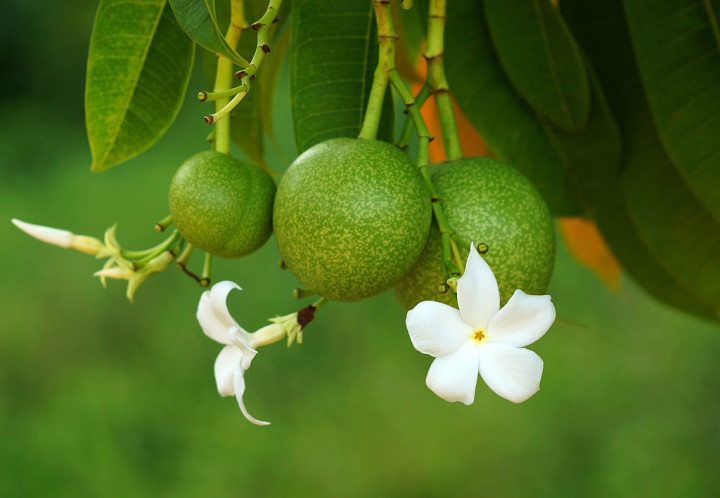. Suicide Tree (Cerbera odollam)
Cerbera odollam suicide tree, grown in public areas in Singapore. when I first arrived oin Singapore, I thought they were mangos. They told me that they were not, but is a poisonous fruit. I was appalled why the council would plant these poisonous plants. Why plant poisonous plants in a public area is beyond me.
After living there for 16 years, I found out that people are not allowed to pick council HDB, and they didn't want to plant edible fruits. By planting this poisonous fruit, people would not steal the fruit.
Quite a silly policy. Won't want to imagine if kids pick up and fruit and ate it.
With a name like that it is little surprise that this tree is probably responsible for most deaths than any other plant. In the Indian state of Kerala alone it is thought to be responsible for around 50 deaths a year. Despite being called the suicide tree the toxins work equally well for murder and the flavour is easily hidden in a bowl of spicy food.
It is in Madagascar where Cerbera claimed most victims. Referred to as ‘ordeal poison’ it was used in the process of ‘trial by ordeal’. Basically, if you survived you were innocent, if you died you were, well, dead… It is estimated that around 3,000 people a year died in these trials, many willingly submitting themselves to the process believing it infallible. Trial by poison was finally abolished in 1861 by King Radama II.
It is the seed inside the fruit of this plant that is highly poisonous. It contains the powerful alkaloid, cerberin, which is similar to digoxin in foxgloves. These both work by disrupting the heart’s rhythm often with fatal results.
http://www.planetdeadly.com/nature/most-poisonous-plants


No comments:
Post a Comment